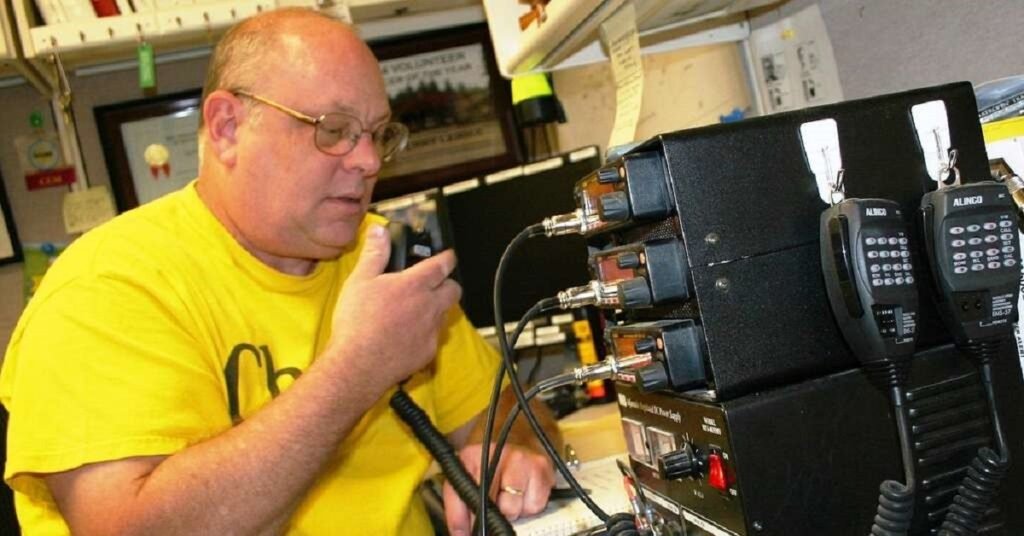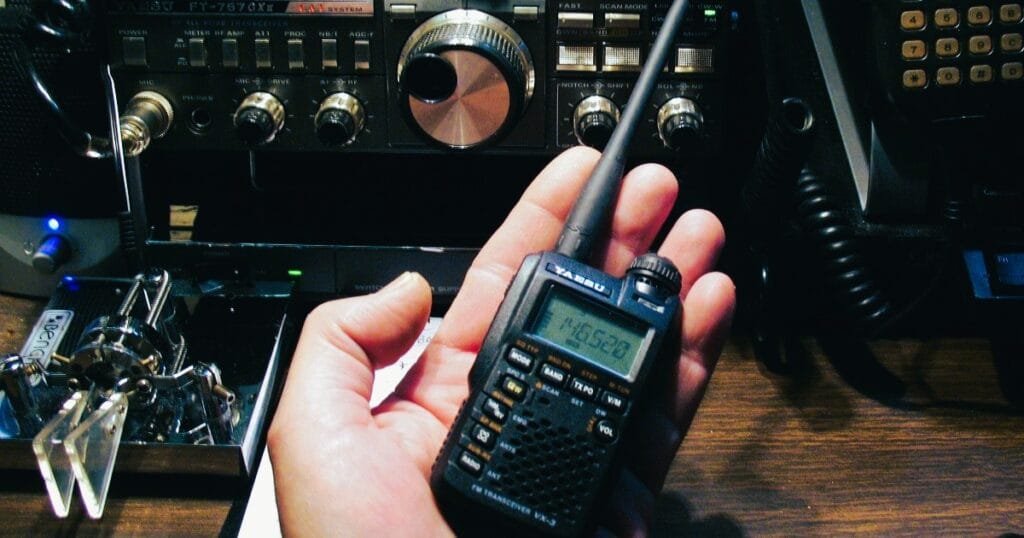Table of Contents
ToggleMicrophone For Ham Radio: How I Chose the Best One
Welcome back to TalkieTrail! Today, I’m delighted to share my experience in choosing the finest microphone for my ham radio setup. A microphone for ham radio may appear to be a simple piece of equipment, yet it has a significant influence on communication quality. A good microphone for ham radio may be the difference between clear discussions and getting lost in a sea of static. Through trial and error, and with the help of various ham radio reviews, I was able to locate the ideal match. This is how I accomplished it!
Why the Microphone Matters in Ham Radio
In the ham radio world, the microphone is the only way to give you the power of talking. You could say it is the voice of your radio communication universe. It is the device that translates your speech into an electrical signal, which is subsequently broadcast throughout the airways. A high-quality microphone ensures clear transmission, lowers background noise, and facilitates better understanding of your voice. Even the greatest radio setup will not allow you to be heard well if your microphone is inadequate. That is why selecting the correct microphone is critical for every ham radio operator, and a good ham radio review may help you find the finest possibilities.
Key Factors I Considered When Choosing My Microphone

When choosing a microphone, I considered many critical variables to ensure I made the greatest decision for my purposes. Here is what I considered:
1. Microphone Type
Microphones are classified into several varieties, each of which provides unique benefits. Here’s a summary of the primary categories that I investigated:
Dynamic Microphones: These types of microphones are best renowned for their incredible robustness against moisture, high sound pressure handling and durability so they are very reliable in various extreme conditions. These are pretty accurate for cancelling background noise. And for that reason these are very good choices if you are recording your transmission from a lustily area.
Condenser Microphones: These types of microphones are very frequency responsive and sensitive. For capturing sounds all around they are very popular. These types of microphones allow you to capture different complex sounds. However, they can take up more background noise and usually require phantom power to function.
Electret Microphones: These are small condenser microphones that are widely used in portable and mobile radios. They provide excellent audio quality and are powered by the radio itself.
2. Frequency Response
By highlighting or attenuating particular ranges of audio frequencies, a microphone’s frequency response can significantly impact the overall quality and clarity of the recorded sound by indicating which frequencies it records most successfully. Clarity is essential for ham radio conversation, therefore I chose microphones that focus on mid-range frequencies (300 Hz to 3 kHz), where human speech is most evident. This helps my voice cut through noise and interference more effectively.
Don’t know which frequencies your ham radio or walkie-talkie is using? Click here and learn how to find your Amateur Radio Frequency List.
3. Impedance
Impedance is another important consideration in microphone choosing. In order to minimize potential problems with audio quality and ensure effective signal transfer, it is imperative that the transceiver’s and the microphone’s impedance match for best performance. Most new ham radios are intended for mics with low impedance (around 600 ohms), so I made sure to get one that met this criterion.
4. Connector Type
One of the most important factors in making sure that tools stay fully compatible and operate together harmoniously is the type of connection. Ham radios employ a range of connections, including 8-pin, 4-pin, and modular RJ kinds. To avoid any unwanted complications, I made sure that my microphone matched the connection on my radio.
5. Build Quality and Ergonomics
My decision-making process also included considerations for durability and comfort. A properly designed microphone is more likely to work consistently over time. Because I spent so many hours on the radio, ergonomic design was critical to lowering tiredness and assuring comfort.
Popular Microphone Models and My Review
After cutting down my choices, I concentrated on some of the most popular ham radio mics available. Here’s my ham radio assessment of the major competitors, including pros and disadvantages for each.
1. Heil PR 781: A Premium Choice for Clear Communication
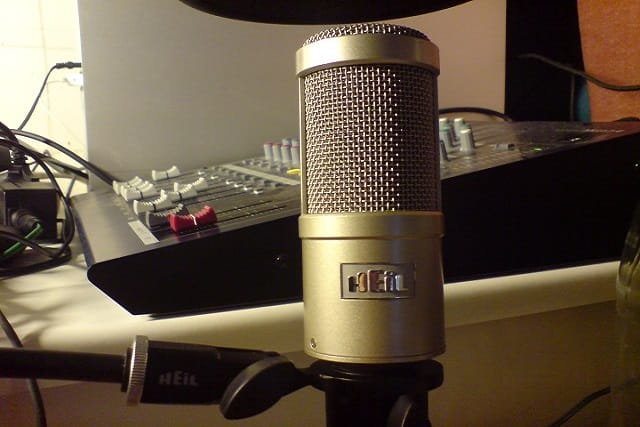
Pros of Heil PR 781
Exceptional Audio Quality: For ham radio operators particularly, Heil PR 781 was created. It produces a clean and natural sound, with a frequency response designed specifically for voice communication. It focuses mid-range frequencies, resulting in excellent voice intelligibility.
Durable Construction: The PR 781 is built to last and crafted of high-quality components, assuring long-term reliability. This makes it an excellent choice for professional operators who want a microphone that can withstand frequent use.
Great Speech Clarity: Its design facilitates vocal communication, allowing people to hear and comprehend you even in busy surroundings.
Cons of Heil PR 781
Costlier Option: The PR 781 is one of the most expensive options. It might be a bit too much for somebody with a very limited budget, but since it is high quality, the price is justified.
Needs Compatible Boom or Stand: If you want to realize the most potential out of this mic, you’re going to need to use a compatible boom or stand, which makes this more costly and complex overall.
2. Shure SM58: The Rugged All-Rounder
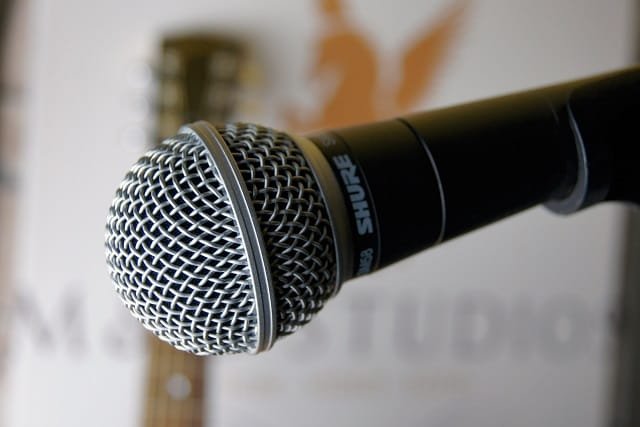
Pros of Shure SM58
Built to Last a Long: The Shure SM58 model is well known for its rugged capability. It has a very good sound capture ability and it is also very durable. It can fight against different environments and can support you till last. For the rugged ability this model of microphone is one of the best choices of professional users.
Awesome Noise Cancellation: The SM58 offers a very good sound isolation, which means, even when you are in a noisy environment while giving your speech, you can still be heard.
Value for money: The SM58 is also great value for money compared to other quality microphones out there. For the most part, it provides pro-level performance at a price anybody can afford as an amateur radio operator.
Cons of Shure SM58
Requires an Adapter for Some Transceivers: The SM58 commonly includes an XLR connection, which may not be compatible with all ham radios. An adaptor may be required, increasing the cost and complexity.
Bulkier Form Factor: It is somewhat bigger than other microphones, which may be a problem if you want a smaller configuration.
3. Electro-Voice RE20: The Broadcast King
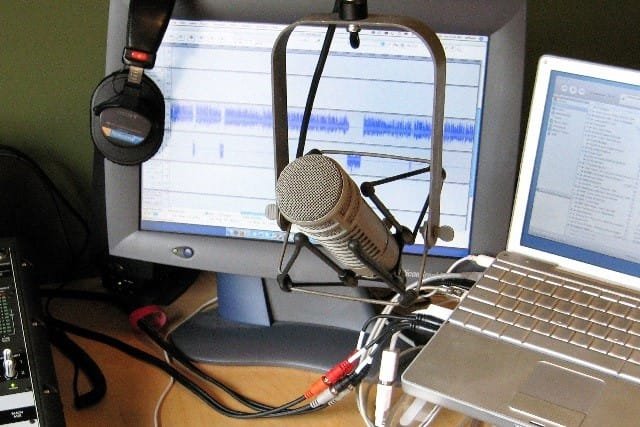
Pros of Electro-Voice RE20
Superior Audio Quality: It delivers a warm, natural sound, which is why the RE20 is a favorite with both broadcasters as well as ham radio enthusiasts. Vocal nuances are captured precisely, ensuring professional-grade audio.
Excellent Build Quality: The RE20 is solid based so you can trust this mic in tough applications due to its durability and built to handle hard usage for years to come. The durability of its robust form ensures that you can have realized this for a long time despite repetitive use.
Better Response of Frequencies: RE20 microphones got a wide and flat response of different frequencies. As a result they can capture a natural and quite balanced sound. Receivers find a clear and natural sound if recorded from RE20.
Electro-Voice RE20 Disadvantages
Expensive: The RE20 is one of the more expensive alternatives, making it less suitable for operators on a limited budget.
Requires a Stand or Shock Mount: To attain peak performance, the RE20 needs a suitable stand or shock mount, which raises the overall cost and setup complexity.
4. Kenwood MC-60A: The Go-To for Kenwood Users
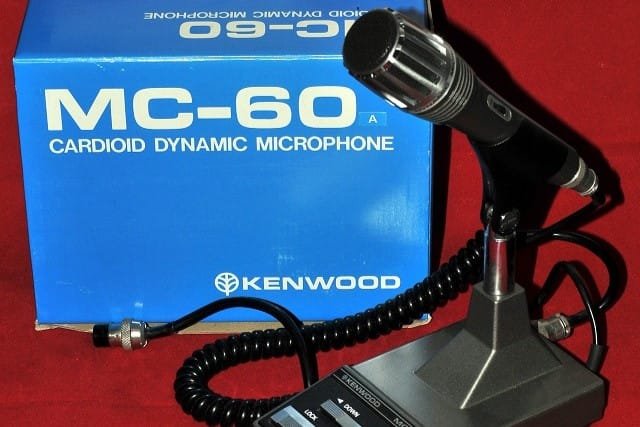
Pros of Kenwood MC-60A
Plug and Play with Kenwood Radios: The MC-60A is designed for use with Kenwood transceivers and is virtually plug and play.
Nice Audio: The electret will provide sounds that are bright and clear and quite sufficient for most ham applications.
Built-in Preamplifier: So, it has a built-in preamplifier: It means it will amplify your voice signal & will make your voice clearer on longer distances.
Cons of Kenwood MC-60A
Limited Compatibility: The MC-60A is designed only for Kenwood transceivers, restricting its compatibility with other brands.
May Catch Surrounding Sounds: Its performances as an electret microphone make it very sensitive to background noise, which may not be suitable in noisy situations.
5. Yaesu MD-100: Tailored for Yaesu Enthusiasts
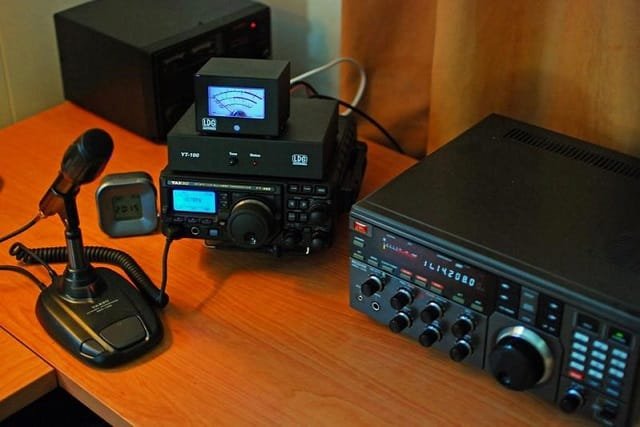
Pros of Yaesu MD-100
Specifically Made for Yaesu Transceivers: The MD-100 directly connects with your Yaesu radios allowing for the utmost compatibility.
Great Speech Intelligibility: The MD-100 presents a tailor-fit frequency response and equalization that increases the precision of voice intelligibility and communication.
Configurable Audio Characteristics: The microphone can be configured easily, for optimal audio performance for different operating scenarios.
Cons of Yaesu MD-100
Limited to Yaesu and Some Other Radios: Like the Kenwood MC-60A, this microphone’s compatibility is mostly confined to Yaesu transceivers, limiting its versatility.
Higher Price: The MD-100 is on the costlier side, which may be a barrier for cost-conscious companies.
Ham Radio Review: Choosing the Right Microphone
When choosing a microphone for ham radio, keep the following considerations in mind:
1. Match Your Transceiver’s Specifications
Make sure the microphone you purchase is compatible with your transceiver’s impedance and connection type. Checking these details now will save you trouble in the future. Learn more here.
2. Consider Your Operating Environment
If you work in a loud setting, consider microphones with strong noise rejection. In contrast, if you’re in a quiet hut, a sensitive condenser microphone may be a superior option for capturing detailed sounds. Need the perfect idea on which environment is best for each radio wave band? Just click here.
3. Budget Wisely
It’s crucial to have a clear budget before starting your search as it will help you make decisions and guarantee that you only consider products that fit into your budget. While higher-end microphones provide better audio quality and durability, there are many low-cost choices that work really well for amateur radio use.
4. Read Ham Radio Reviews
Take some time to study ham radio reviews and user testimonials. These evaluations give useful information about real-world performance and dependability, allowing you to make an informed decision.
5. Test If Possible
If you have the opportunity, try out different microphones to find which one best fits your voice and working style. Some radios may work better with specific microphones, and testing is the best way to find your ideal combination.
Conclusion: My Ham Radio Review Journey
Choosing an appropriate microphone for my ham radio setup really improved my communication experience. After examining microphone type, frequency response, impedance, and build quality, I discovered the ideal microphone for my purposes. Whether you’re new to ham radio or an experienced operator, investing in a high-quality microphone will improve your on-air talks. Don’t just take my word for it; look into ham radio reviews and begin your own road to improved sound now!
